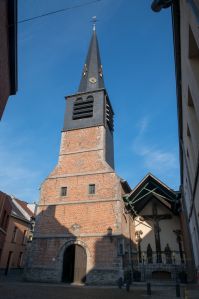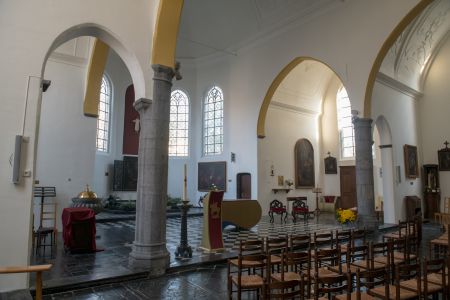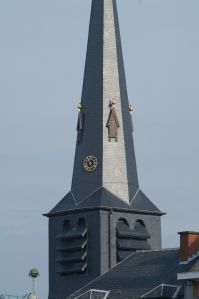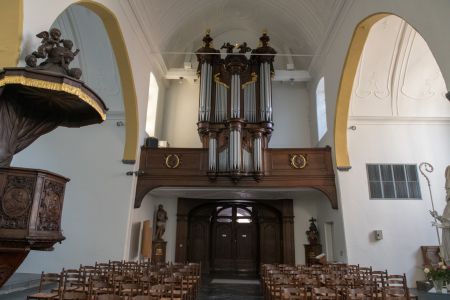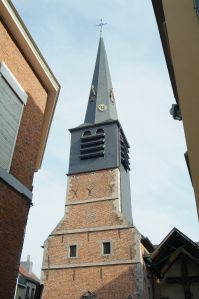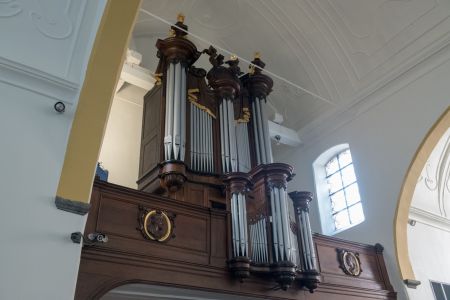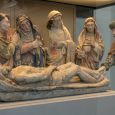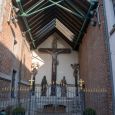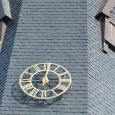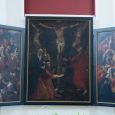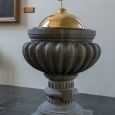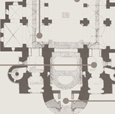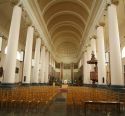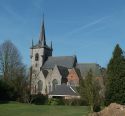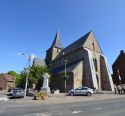Church | 1585-1603 | Gothic | Catholic Church


Map
Opening hours
01 January - 31 December
Mon 9.00 - 18.00
Tue 9.00 - 18.00
Wed 9.00 - 18.00
Thu 9.00 - 18.00
Fri 9.00 - 18.00
Sat 9.00 - 18.00
Sun 9.00 - 18.00
Guided tour
office.de.tourisme@ath.be +32-68-26 51 70
Religious offices
Saturday 6.30 pm
Description
The church, constructed of bricks and freestone, was built in 1585. This is a building in the Gothic style that was the object of a major restoration in the 1980s and 1990s.
On the outside, above the entry door, a relief with the look of the Renaissance can be seen, which shows us Saint Martin sharing his coat.
In the interior, the chevet of the choir, the beautiful proportions of the nave, and the radiance of the whole create a lovely feeling of intimacy.
Of special note at the centre of the choir, the triptych and at the foot of the chair of truth, the “mystical delta”, a symbol of divine mercy dating from the end of the 18th century.
Photos
Remarkable elements
Tombing
Ath hosts two invaluable Burial Places, one of the oldest in Europe. The local one dates from 1520–1550, carved in white Avesnes stone, and regained its polychrome colours in 2009, now in an air-conditioned display. Likely part of a knight of the Holy Sepulchre’s monument, perhaps Jean Zuallart, it was once under the Calvary outside the church and is now safely protected inside.
Calvary
Our church features a calvary from 1525–1575, once the last station of a Way of the Cross on the city walls alongside the contemporary Burial. When the walls were dismantled, it remained near the church under the Brotherhood of the Passion. Originally six figures, it now has five; Mary Magdalene was lost in 1922. Protected by an awning for 20 years, it still shows traces of ancient polychromy.
The "Old Orloge"
The dial in the spire has only one hand and is among Europe’s oldest clocks, with maintenance recorded in parish accounts as early as 1360. Originally in the belfry on the Grand-Place (demolished 1774), it was later moved to the church bell tower. Restored in the 1990s, its original mechanism now works with the aid of modern mechanics, preserving its historic function.
Triptych
A 2010 parish document shows that in August 1605, the priest and aldermen commissioned François de Saive for a triptych: crucifixion in the center, carrying of the cross on the left, descent on the right. The back shows Christ triumphant and a mysterious donor. Planned portraits of Saint Arnould and Saint Erasmus were never included. Other works by the master are in the Hopital de la Madeleine, founded by Philippe le Bon.
Organ
Attributed to Thuin organ builder Sébastien Lachapelle, delivered in 1748, it was restored in 1776 by Pieter Van Peteghem and in 1804 by his son, originally with about twenty stops. Between 1820 and 1911, restorations, notably by the Slootmaekers brothers, altered it. Delmotte worked on it in 1986 without success; Schumacher restored its tone in 1995. New work will restore the stops. The rood displays medallions of King David and Saint Cecilia.
Baptismal font
Originally at the church entrance in a small baptistery, it was moved to the Sacred Heart Chapel about ten years ago. This simple, beautiful piece was donated by Philippe Desmaistres in 1591. The circular blue stone tank from Hainaut has large torus sides; the base shows his monogram and the coping the inscription of his gift. A copper cover added in 1803 disappeared and was reconstructed in 2002 by Clabots of Dinant.



